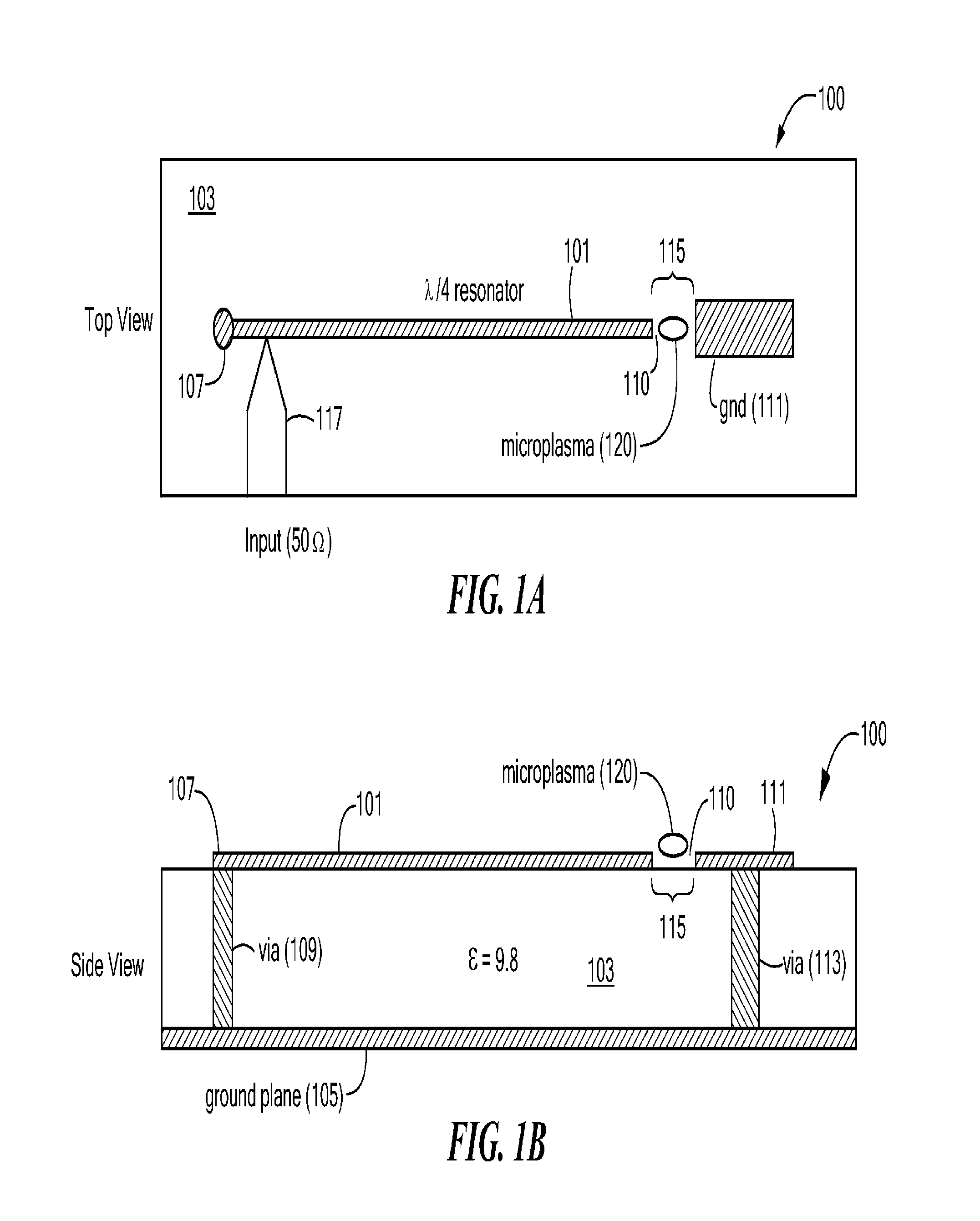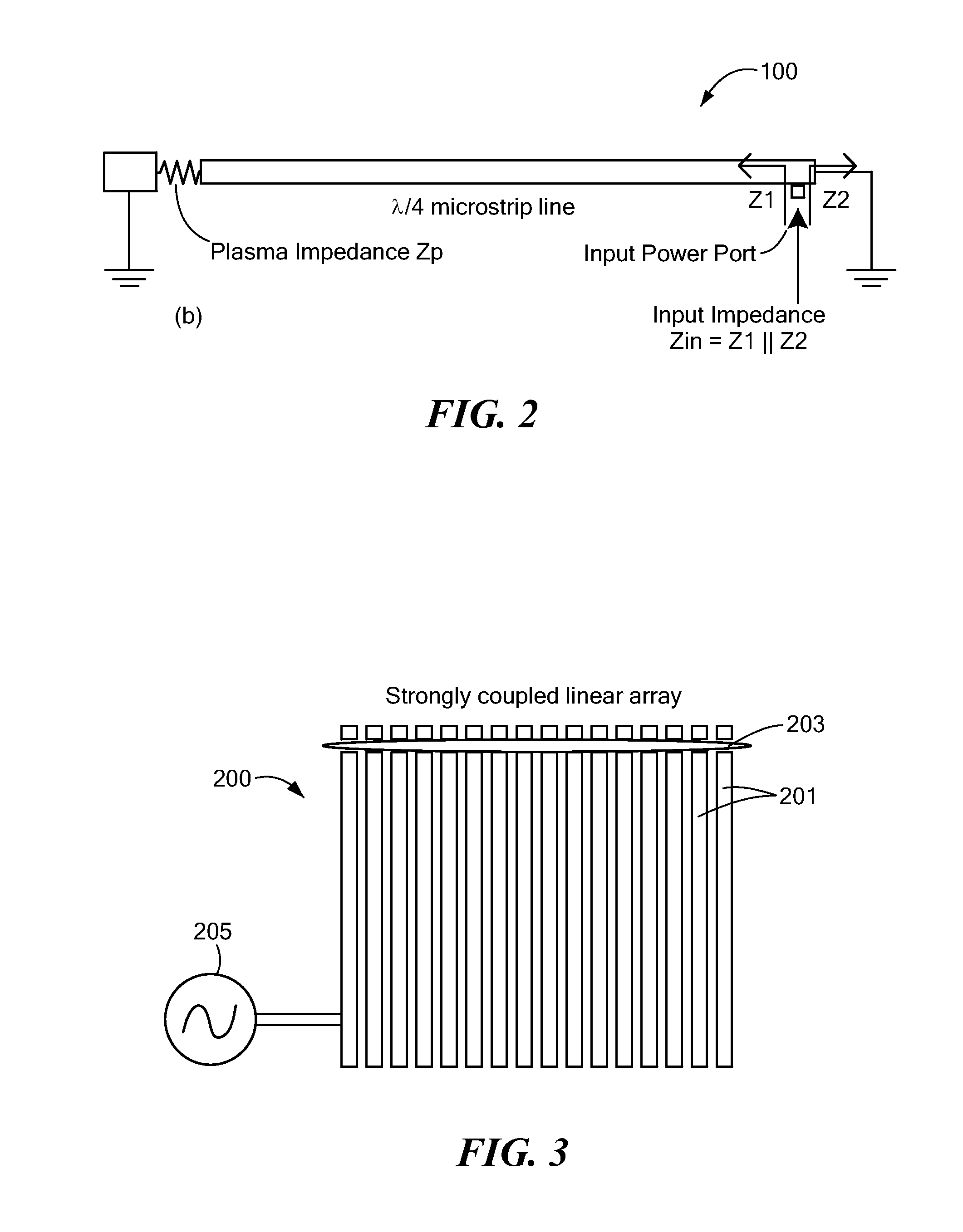Microplasma generator and methods therefor
a microplasma and generator technology, applied in the field of microplasma generators and methods therefor, can solve the problems of not being able to produce not being able to meet the needs of a single large diode, etc., to achieve the effect of low cos
- Summary
- Abstract
- Description
- Claims
- Application Information
AI Technical Summary
Benefits of technology
Problems solved by technology
Method used
Image
Examples
Embodiment Construction
[0031]This application claims the benefit of U.S. Provisional Application No. 61 / 173,334, filed Apr. 28, 2009, the entire contents of which are incorporated herein by reference.
[0032]FIGS. 1A and 1B illustrate top and side cross-section views, respectively, of a microplasma generator 100 according to one aspect of the invention. The generator 100 in this embodiment comprises a single strip of metal 101 supported on the surface of a dielectric material 103. A ground plane 105 is provided on the dielectric material 103, opposite the metal strip 101. A first end 107 of the metal strip 101 is connected to the ground plane 105 through a via 109 in the dielectric material 103. A ground electrode 111 is connected to the ground plane 105 through via 113. A gap 115 is defined in the area between the second end 110 of the metal strip 101 and the ground electrode 111.
[0033]A source 117 of high frequency power is connected to the strip 101, preferably at a location on the strip where the input ...
PUM
| Property | Measurement | Unit |
|---|---|---|
| Temperature | aaaaa | aaaaa |
| Temperature | aaaaa | aaaaa |
| Length | aaaaa | aaaaa |
Abstract
Description
Claims
Application Information
 Login to View More
Login to View More - R&D
- Intellectual Property
- Life Sciences
- Materials
- Tech Scout
- Unparalleled Data Quality
- Higher Quality Content
- 60% Fewer Hallucinations
Browse by: Latest US Patents, China's latest patents, Technical Efficacy Thesaurus, Application Domain, Technology Topic, Popular Technical Reports.
© 2025 PatSnap. All rights reserved.Legal|Privacy policy|Modern Slavery Act Transparency Statement|Sitemap|About US| Contact US: help@patsnap.com



